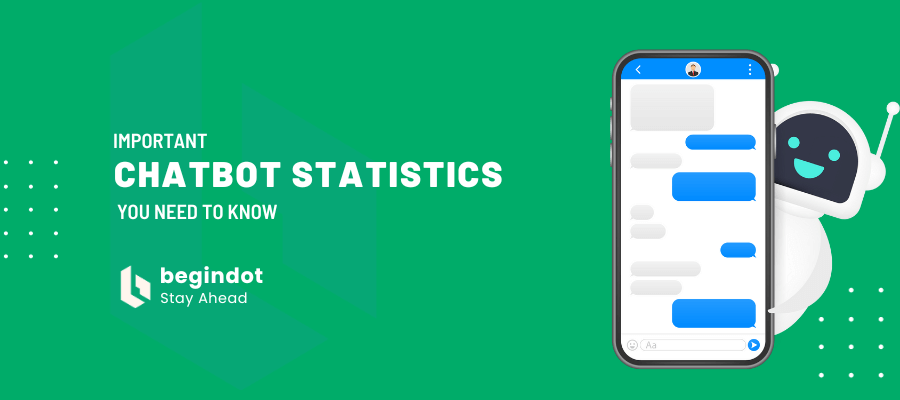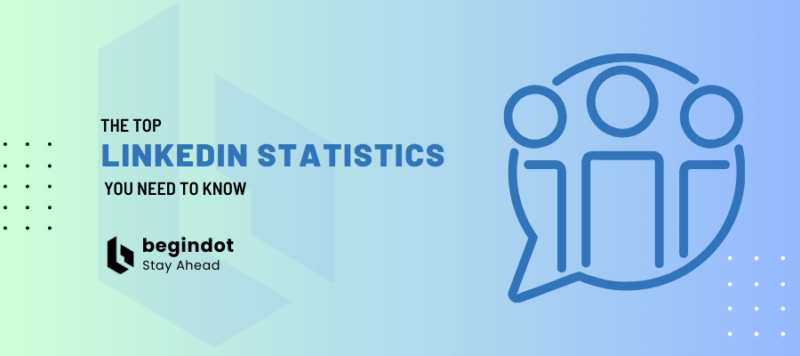If you’re planning to go for Chatbot technology to generate more personalized and effective text-based conversation, these crucial Chatbot statistics might come in handy.
Chatbots have taken customer service by storm and it isn’t going to slow down soon. The reason for the popularity is the likeness towards this technology model from customers.
To make sure you’re up-to-date with the latest technology, we’ve compiled a list of some Chatbot statistics.
Let’s dive right in!
1. Customer Service Cost
According to IBM, there are many advantages of Chatbots and the most important for businesses is its cost. The convenience and efficiency of Chatbots can help reduce customer service costs by over 30%.
This efficiency helps businesses employ human agents especially at the complex procedures that require contact.
(Source: IBM)
2. 1.4 Billion People Use Chatbot
As the process of providing effective customer service is picking up the pace, the need to resolve their questions is also increasing. This, in turn, is increasing the burden on artificial intelligence to provide useful tools and resources. According to a report, the user base for Chatbot has increased to 1.4 billion.
3. Chatbots Are Able to Answer 80% of Questions
Although the requirement of trained professionals to answer complex questions will forever be important, Chatbot’s ability to answer is surprising to everyone. According to IBM, Chatbots can answer 80% of the standard questions.
This statistic is particularly crucial to paint a big picture of better response time and customer service agents taking on challenging tasks.
(Source: IBM)
4. Customer Interactions Without a Human Agent
Companies have realized the cost of losing a customer due to inadequate customer service. According to a report from IBM, 85% of all human interactions will be handled without a human agent.
When compared to phone interaction, the cost of text-based conversations is significantly less expensive.
(Source: IBM)
5. Chatbots Usage Among Millennials
If your company has a customer base between the age of 18 and 34 years, this Chatbot statistic will hold great significance. As per the study of Mobile Marketers, 40% of Millennials tend to use Chatbots every day.
Chatbots like Siri and Google Assistance are becoming more human-like and help in increasing the numbers.
(Source: Mobile Marketer)
6. 25% Customer Support Happens Through Voice-Based Chatbots
Chatbots are subject to tremendous growth after 2017. To provide the best customer service, technology is also evolving. According to research by Gartner, more and more companies are adopting voice-based bots for their companies.
Over 25% of customer service tech interactions use virtual assistance.
(Source: Gartner)
7. Chatbot’s Best Feature
There are many advantages of using Chatbots for customer service such as getting a quick answer, getting a detailed explanation, and more, but there is one that steals the limelight.
According to Drift’s research, 64% of internet users consider the 24-hour service as the best feature/benefit provided by Chatbots.
8. The Element of Trust
Surprisingly, statistics revealed that humans were more inclined towards AI chat technology than trusting humans with such situations. According to Business Insider, it was determined that 635 of the consumers trusted Chatbots with sensitive pieces of information.
(Source: Business Insider)
9. Investments in Chatbots
Chatbot has a user base of 1.4 billion but the market trend shows that further investments in Chatbots could prove to be a very good move.
Chatbots Magazine estimated that companies all over the globe will spend $5 billion on Chatbots by 2021. These investments will come from the real estate, banking, and tourism industries.
(Source: Chatbots Magazine)
10. Chatbots Usage in Service Organizations
To be able to solve standard consumer questions without the help of human assistance has driven customer service organizations to adopt Chatbots.
Likewise, as per the data of Salesforce, it is estimated that 53% of such organizations will use Chatbots within the next 18 months. This is a 136% growth as compared to previous years.
(Source: Salesforce)
11. Customers’ Changing Expectations
With the rise of technology, customers’ expectations and demands are also growing. In terms of customer service, users are now demanding real-time interactions.
The only technology that could make this possible is the Chatbot. In fact, according to Salesforce, 58% of the customers admitted that the presence of Chatbots and voice assistants have changed their expectations of companies. Moreover, 77% of customers acknowledged that Chatbots will change their expectations in the next five years.
(Source: Salesforce)
12. Chatbots for Shopping
Most customers use Chatbots not only for assistance but also for a wide range of other purposes. In fact, shopping tops the list for Chatbot users in the US.
According to Chatbot Magazine, 16% of Americans use Chatbots channels such as Alexa or Google Home for shopping purposes.
(Source: Chatbot Magazine)
13. Bank Systems to Employ Chatbots
By the end of 2020, 80% of the companies will use Chatbots, and the majority of such companies would be from the banking and traveling sector.
According to Lauran Foye, it is estimated that bank systems will automate their customer interactions up to 90% by 2022.
14. Chatbots vs. Mobile Apps
Although the new technology will not replace the old technology, it will outdate it. Chatbots and Mobile Apps work on a similar note. This stat by Gartner says that many companies will start to give more importance to Chatbots than mobile applications.
As the Chatbot engagement statistics suggest, Chatbots are proving to be more reliable and fulfill customer needs. It is also estimated that 50% of companies will spend more on Chatbots than on mobile apps.
15. Companies Having Employees Between 1 and 50 Employees
If you’re a small company, i.e., you’ve got an employee base of 1 to 50 employees, this statistic will give you a better perspective of Chatbots.
Companies with 1–50 employees tend to employ more Chatbot applications than those with more number of employees. In fact, 40% of companies with 1–10 employees are the most frequent users of this technology.
16. The Success Rate of Bot Interactions
We have already determined that Chatbots can answer the standard questions up to 80%. However, the success rate of answering questions differs from industry to industry.
As far as the health sector is concerned, IBM estimates that the success rate of bot interaction will rise from 12% to 75% in 2022. For the banking sector, it is estimated to reach 90% in 2020.
(Source: IBM)
17. The Area of Benefits
Customer service, being the most advanced and common area linked with the Chatbots, benefits 95% from the technology.
Among other areas, Sales and Marketing (55%) and Order Processing (48%) are the ones that are most benefited by the usage of Chatbots.
18. The Popularity of Chatbots Among Men and Women
Approximately 50% of women (48.78%) and 36.81% of men use Chatbots for online shopping, proving the stat that women are more inclined towards using Chatbots than men.
19. Text-Based vs. Call-Based Customer Service
According to a Facebook-commissioned study, it was determined that 56% of people prefer text-based customer service as compared to call-based customer service.
This is mainly due to the advancement in the internet era, where people are no longer comfortable in giving customer service a phone call.
20. Buying Items through Chatbots
Chatbots are the future of marketing and the statistics are here to prove its tremendous prospect. As far as shopping on E-Commerce stores are concerned, people are using Chatbots for not only answering basic queries but also for personalized product recommendations.
In fact, 47% of customers are open to the idea of buying products with the use of Chatbots.
21. Humans Understand Better
Although Chatbots are going in the right direction, they still face some bias from the customers. It is believed that 60% of people think that humans can understand them better than a bot.
While it would be hard to change this perspective, Artificial Intelligence is working day and night to remove this bias.
22. Positive and Negative Chatbots Experience
One could not deny the fact that Chatbots still have a long way to go and plenty of repairs to be done before reaching their true potential.
However, according to a survey by LivePerson, Chatbots are, of course, going in the right direction. The survey determined that 38% of users stated their Chatbot experience was positive while 11% of users stated their Chatbot experience was negative.
23. Chatbots Response Geographically
According to Business Insider, European countries tend to show a much better response than the US and Japan. 50% of respondents in European countries had a positive experience with Chatbots.
Conclusion
The purpose of technological advancements is to make lives easier and Chatbots are a step in that direction.
If you are looking to improve the customer experience, the above-mentioned statistics will help you work on the right track to generate more leads and conversions.
Don’t miss these related articles:










